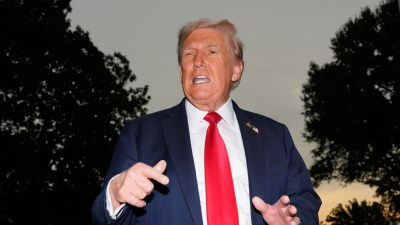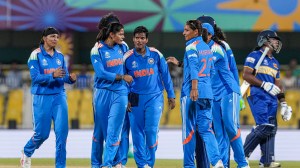The uniform loses its teflon
Mumbai's middle class is angry. A drunken constable raping a sixteen-year-old in a South Mumbai police booth is what it took to bring the go...

Mumbai’s middle class is angry. A drunken constable raping a sixteen-year-old in a South Mumbai police booth is what it took to bring the good burghers of the city onto the streets. The cops for their part are claiming hard that the incident is an exception — the unforgivable action of one bad egg and should not be seen as reflective of the force.
But the horrifying incident has created such widespread revulsion that finally tales of drunkenness, harassment, extortion and even murder among cops, seen as unfortunate facts to live with earlier, are finding their way to the media and ordinary people are pointing angry fingers at the man in the uniform.
Sometimes it takes something terrible to spark off a much needed bout of introspection. And it has been a long time, indeed, since such an anti- authoritarian sentiment has been whipped up in the city. The last time was perhaps in the post-Emergency period when the prevailing pro-civil rights climate in the country — a time when reports exposed atrocities such as the Bhagalpur blindings and the systematic killing of dacoits by the police in fake encounters — turned the spotlight on similar infringements in Mumbai. 1983 was the year when Ardh Satya, the film that examined the relationship between the police and violence, was released, sparking off much discussion on the subject. Mumbai stands poised on the brink of another useful debate. But it cannot come about unless both sides accept responsibility for things having come to this pass.
The fact is, in the last three decades Mumbai’s police force has committed serious excesses with the full support of the city’s influential middle and upper classes. Two phenomena in particular reflect this trend: The blatantly partisan role played by the police against members of the minority community in the riots of 1992-1993, and the long-running practice of ‘‘encounters’’. Admittedly things have not remained static. On the sectarian front particularly, quiet efforts by retired police officers, activists, and members of local communities has brought about some welcome change and even on encounters there appears to have been some minimal rethinking.
The significant point, however, is that the idea of rough, ready justice and untrammeled authority has been sanctioned, even celebrated by society in recent times.
Media articles and films have made a hero of the police officer (not the bumbling smalltime constable) dispensing death sentences on the spot; in fact encounter killings have become like scalps on a belt, to be rewarded not questioned. Complaints that have cropped up from time to time, of the police killing someone in an encounter out of mistaken identity or facts of a so-called encounter not tallying with reality and so on have never quite been able to build the momentum necessary to dent the fascination with the killer cop image.
The increased glamour and fear perhaps, surrounding the police has given it a bit of a Teflon coating allowing it to weather a series of embarrassing events: The release of the alleged terrorist mole, Mohammad Afroze Razzak, in 2002, and the dismissal of the purported plot to kill BJP leader L.K. Advani in 2003 by the courts, to name just two of a series of bungled cases; the naming of high ranking policemen in the Telgi stamp scam and a clumsily covered up custodial death.
In fact, considerable play has been given instead to a variety of police complaints ranging from bad conditions of work including stress and inadequate housing to the strenuous requirements of the judicial process, to films portraying cops in a bad light, and so on. Not that all these are necessarily without any foundation in truth. Nor can one deny that the situation has been arrived at, at least partly, out of a frustration with the collapsing judiciary and the apparently unstoppable march of corruption. But constant complaints and shifting blame does reveal a fundamental reluctance within the police force or those responsible for its functioning to introspect on its declining standards.
The police force is not unique. Every agency needs a check. By turning a blind eye to or encouraging excesses by the police with no reflection or concern about the dangerous long-term consequences, the public should realise that it has failed to provide that check.
The police may be right in claiming that the recent Marine Drive rape should not be held against the force as a whole. But the fact is that when More, the constable rapist, emerged before an angry protesting crowd having just committed his crime and said that no one could touch him as he was with the police, he was voicing a sentiment that should worry us. Very much.



- 01
- 02
- 03
- 04
- 05



























